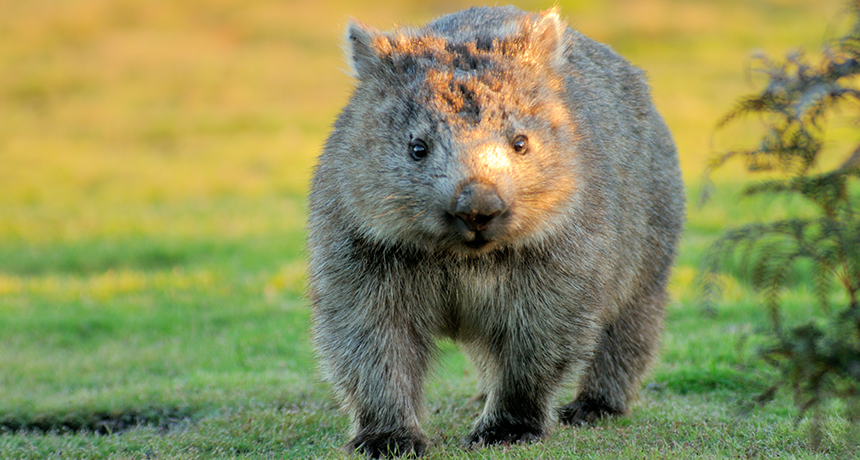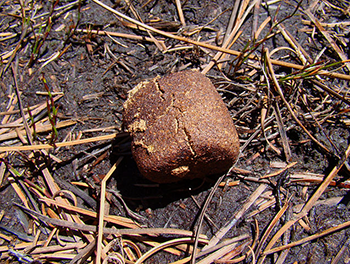How wombats make their unique cube-shaped poop
The elasticity of the their intestines helps to shape those fecal cubes

Of all the poops in the world, only those of Australia’s wombats come out shaped like cubes.
Like many animals, wombats mark their territories with small piles of scat. Other mammals poop round pellets, messy piles or tubular coils. But wombats somehow sculpt their scat into cube-shaped nuggets. These may stack better than rounder pellets. They also don’t roll away as easily.

Cubic shapes in nature are very unusual, observes David Hu. He’s a mechanical engineer at Georgia Institute of Technology in Atlanta. An Australian colleague sent him and colleague Patricia Yang the intestines from two roadkill wombats. These had been collecting frost in the guy’s freezer. “We opened those intestines up like it was Christmas,” Hu says.
The intestines were packed with poop, Yang adds. In people, a poop-filled bit of intestine stretches out slightly. In wombats, the intestine stretches to two or three times its normal width to accommodate the feces.
Making and maintaining flat facets and sharp corners takes energy. So it’s surprising that the wombat’s intestines would create that shape. In fact, those intestines don’t look much different from those of other mammals. But their elasticity does vary, the researchers reported on November 18. They explained the potential importance of this at a meeting in Atlanta, Ga., of the American Physical Society’s Division of Fluid Dynamics.
Ballooning gut segments appear to be key
Yang used skinny balloons — the type that gets sculpted into animals at carnivals — to inflate the intestines. She then measured their stretchiness in different places. Some regions were more stretchy. Others were stiffer. The stiffer places probably help create the distinct edges on the wombat poop as the waste moves along, Yang proposes.
Sculpting the poop into cubes appears to be a finishing touch for the wombat gut. A typical wombat intestine is about 6 meters (almost 20 feet) long. Over that span, the poop takes on distinct edges only in the last half meter (1.6 feet) or so, Hu found. Up to that point, the waste is gradually solidifying as gets squeezed through the gut.
The finished turds are especially dry and fibrous. That may help them retain their signature shape as they’re released, Yang suggests. They can be stacked or rolled like dice, standing up on any of their faces. (She knows. She tried it.)
In the wild, wombats deposit their droppings on top of rocks or logs to mark their territory. Sometimes they even form small piles of their scat. The animals seem to prefer to poop in elevated spots, Hu says. Their stubby legs, though, limit this ability.
Yang and Hu are looking to confirm that the wombat gut’s varying elasticity really does create the cubes. To investigate, they have begun modeling the animal’s digestive tract — with pantyhose.







